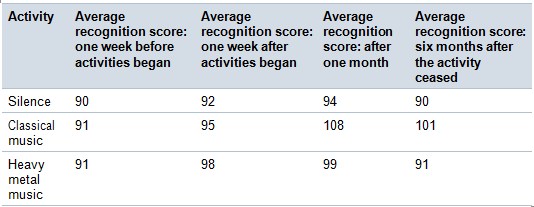Crystallized Intelligence
The term describes the buildup or accumulation of essential facts, skills, and aptitude acquired over a specific duration. Crystallized intelligence emanates from ongoing and past experiences throughout one’s life based on facts. Crystallized intelligence increases with individuals age. According to psychologists, as people age, they are more likely to accumulate new knowledge and understand different issues, crystallizing their intelligence levels. People acquire such forms of intellect through studying, reading, and executing complex tasks. Accordingly, psychologists can measure crystallized intelligence through vocabulary, grammar, reading comprehension tests, and other general knowledge assessments. Some examples of crystallized intellect include memorizing new mathematical formulas and knowing the exact date of renowned historical events.
Psychometrics
The term refers to the methods or techniques applied in the design and interpretation of different psychological tests. Specifically, psychometrics tests involve establishing individuals’ happiness level, intelligence, memory, aptitudes, attitudes, and personalities (Byford et al., 2014). In psychology, psychometrics tests are standard and scientific methods that can gauge individuals’ mental competence and behavioral styles. For example, a company can use psychometric tests to ascertain the employees’ suitability for positions that require specific personality traits and cognitive abilities. Through such tests, the company can assess the employees’ ability to analyze organizational situations, solve complex tasks, and make informed or rational judgments. Some examples of psychometrics include numerical reasoning, situational judgment, critical thinking, and verbal reasoning tests.
Making Sense of Data in a Table

Reponses to Questions
From looking at the table, I can tell that “each student’s working memory was measured four times (Before activities began, after one week of activities, after one month of activities and six months after activities ceased).”
The table shows that: “On average, the classical and heavy metal groups displayed a larger positive impact on scores after one month in comparison to the silence group.”
Which of the following conclusions do you think is a better fit for the data in the table?
Answer: “The table shows that all three groups’ average scores after one week of the activity were, either the same as, or higher than, their average scores six months after the experimental study sessions ended.”
Explanations: The columns and rows in the table above show the result of the students’ recognition tests under different environmental conditions (silence, classical music, and heavy metal music). The recognition score in the rows revealed the students’ ability to hear normal and impaired subjects. Similarly, in the first column, the students did not record any significant changes in recognition when exposed to silence. The second column revealed a progressive increase in the students’ recognition score when exposed to classical music. The last column affirmed that exposure to heavy music affected the students’ recognition six months after the activity ceased.
Reflective Component
My experiences of using the collaborative and discussion forums were both captivating and thought-provoking. The platforms enabled me to brainstorm and explore high-quality and relevant ideas and facts. They also exposed me to innovative thinking and encouraged me to expand my primary knowledge of different concepts. I enjoyed exchanging ideas with peers and stimulating my creative thinking through collaborative platforms. I do not have any concerns about posting to the forums because they offer me an opportunity to examine complex topics and meet new people. Finally, the informative and interactive discourse illuminates creative solutions that would encourage me to post and interact more often.
Reference
Byford, J., McAvoy, J., &Banyard, P. (2014). Measuring intelligence. In Investigating Intelligence (pp. 14-42). The Open University.
